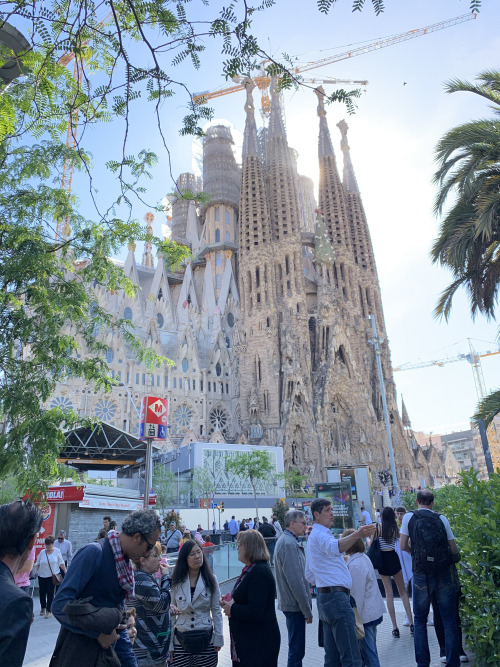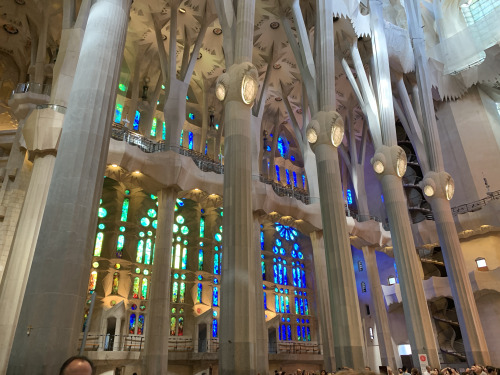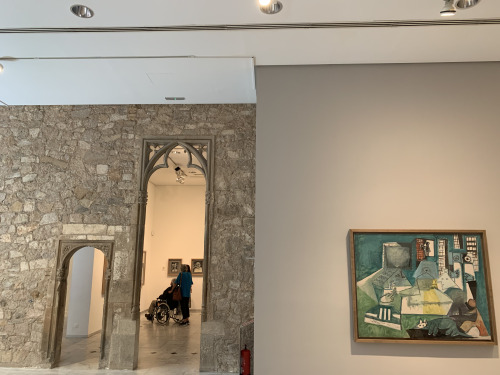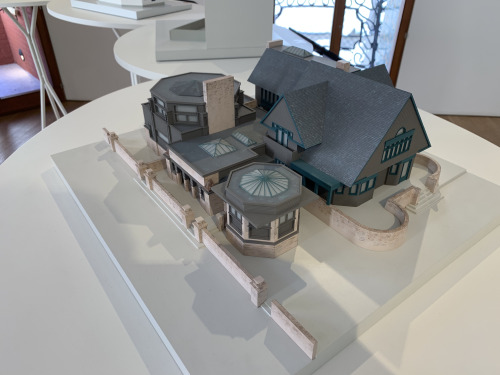For weeks now, we have been studying the structure and the de facto rules of the European institutions. However, like many social systems, the nuances buried deep in experiences carry the most truth. Through our visit to the Parliamentarium, the visitor center, and home of the EU parliament role-playing game, we gained hands on experience for the first time and learned the de jure rules and tendencies that sway and tide the members of the EU parliament.
We started with being seated in a small cubby-sized auditorium. Our speaker explained the course of the game, provided us with assistive smartphones, and sent us off to begin the game. We first broke into political parties, each resembling one from the European Parliament: the Tradition party (center-right), the Liberty party (center), the Solidarity party (center-left), and the Ecology Party (Greens). I was a representative from Greece and was placed in the Liberty party. We received information on the proposals from the commission (as would happen in the European Parliament) we would be debating: a sustainable water development proposal and legislation on microchip implants. Our party divided further into groups that would tackle each topic and chose a spokesperson. We broke off, with our smartphones telling us where to go. We rapidly moved from station to station, interviewing virtual constituents, experts, and lobbyists, running the office by taking calls and reading emails, and eventually talking to a simulated press conference on our stances. We then met with our team to settle on a stance before going into debates.
In the debate room we were asked to negotiate, compromise, and settle on a bill that could eventually pass in a parliament. A frenzy of conversation started in which everyone attempted to leverage one factor over another in trying to convince everyone else why they should accept one proposition over another. We soon discovered multiple majorities: some were for increasing infrastructure while others were totally against raising water prices. The interests of the parties were assigned so that no one party could get everything they wanted if they also wanted the required majority to pass it. This led to coalitions that formed, not on common interests, but on shared “unacceptables”. I think this perfectly outlines one of the important nuances about governance and cooperation that one could only find by experience: the fact that structure matters. The rules of the game you’re playing matter more than who your opponents are, how they think, or how they play. For the Parliament, or any legislative body for that matter, structure defines a scope of reach and efficacy within which a representative sees their work. The importance of structure may be obvious, but the non-triviality of such importance is not. No one could have predicted how the structure of the Parliamentarium game was going to affect the final outcome based on information beforehand, yet it blindsided us as the overriding feature. Each social system has a unique and subtle set of hidden governing factors. After a second hearing two bills were passed that left everyone exhausted and dissatisfied – a final reminder of the power of structure.
After a couple of hours of rest we visited what we had simulated day before: the European Parliament. We were received by Jana Javi-Robertson who works for the visitor and seminar committee of the Parliament. Her presentation, unlike some of the other site visits we’ve gone to, avoided basic information that we already knew and dove into deeper and more relevant topics that worked on our existing knowledge: the Brexit redistribution of seats, party restructuring after the elections, and the interesting dynamic of majority-seeking in the Parliament. She also included the fact that MEPs must fulfill their role as a representative of their constituents and must not overstep their duties and responsibilities. I think this specificity of role within the parliamentary structure is often forgotten despite its somewhat counterintuitive importance. After the presentation we were lead to the Hemicycle and completed our European Parliament visit series with the location in Strasbourg.
As an engineering major, I have at times found myself extremely conflicted on this trip. My tendency is to identify factors of utility for a given scenario and then immediately find the values for which utility is optimized. However, throughout this trip I have seen many solutions to problems provided by smart people that seemed so far from the theoretical utility maximum in the name of things like sovereignty and democracy. But when faced with virtual Ministers, self-interested lobbyists and frustrated constituents in the Parliamentarium game, I’ve come to see that representation is itself a factor of utility and while it may not produce the most efficient or speedy solution, the structure sacrifices these things in order to give people a voice and not leave them in the margins of a document of legislation. People and the ways in which they interact, unfortunately, cannot be engineered or optimized. Democracy and cooperation will probably always be imperfect, but through thoughtful structure and humanism, it’ll be the best imperfect system we can have.
















